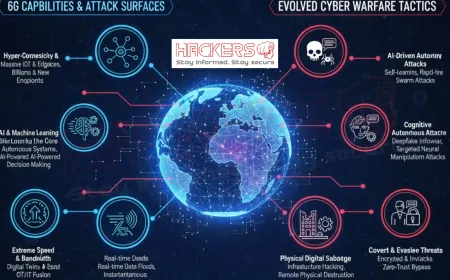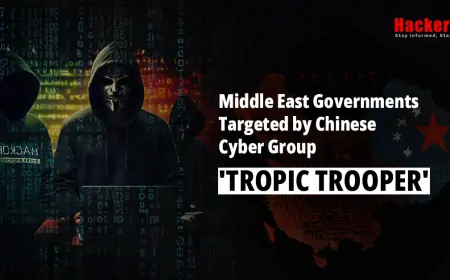Why Are C-Level Executives Becoming the New Cyber Targets?
Imagine waking up to find your company’s bank accounts drained, customer data leaked, and your reputation in ruins. Now imagine the attack didn’t come from a random employee clicking a bad link. It came from you, the CEO. Cybercriminals are no longer just after low-hanging fruit. They are targeting the people at the very top: CEOs, CFOs, COOs, and other C-suite leaders. These executives hold the keys to the kingdom: access, authority, and influence. This blog dives deep into why C-level executives are now prime targets, what makes them vulnerable, and how organizations can protect their most valuable assets: their leaders.

Table of Contents
- Introduction
- Why Executives Are High-Value Targets
- Unmatched Access and Privilege
- Risky Behaviors and Blind Spots
- Common Attack Methods Used
- The Real-World Impact of Executive Breaches
- How to Protect C-Level Leaders
- Building a Top-Down Security Culture
- Conclusion
- Frequently Asked Questions
Why Executives Are High-Value Targets
Cybercriminals follow the money. And in most organizations, the biggest payoff sits at the top. C-level executives are not just employees. They are decision-makers with access to financial systems, merger details, intellectual property, and strategic plans. A single compromised executive account can lead to millions in losses, regulatory fines, or even company collapse.
Attackers know this. They spend weeks, sometimes months, researching their targets. They study LinkedIn profiles, social media posts, conference appearances, and press interviews. Every detail helps build a psychological profile. The goal? Craft a perfect attack that feels personal, urgent, and legitimate.
- Financial gain: wire transfers, ransomware payments
- Corporate espionage: steal trade secrets, M&A plans
- Reputation damage: leak emails, embarrass the company
- Market manipulation: disrupt stock prices with false announcements
Unmatched Access and Privilege
Most employees have limited system access. Executives do not. A CEO’s email account often bypasses spam filters. Their laptop connects to every internal system. One compromised credential can unlock HR records, financial dashboards, customer databases, and cloud environments.
Many executives also use personal devices for work. They check emails on phones, tablets, and home computers. These devices often lack enterprise-grade security. A single weak link, like an outdated app or reused password, becomes the entry point for attackers.
Risky Behaviors and Blind Spots
Time is the enemy of security. Executives are busy. They travel, attend meetings, and make quick decisions. This leads to habits that cybercriminals exploit:
- Clicking links without checking
- Approving wire transfers under pressure
- Using public Wi-Fi without protection
- Sharing sensitive info over unsecured channels
Many leaders believe “it won’t happen to me.” They delegate security to IT and assume they’re protected. This overconfidence creates blind spots. Attackers count on urgency and trust to bypass caution.
Common Attack Methods Used
Cybercriminals use sophisticated, targeted techniques against executives. These are not random spam emails. They are carefully planned operations.
| Attack Type | How It Works | Why It Targets Executives |
|---|---|---|
| CEO Fraud (BEC) | Spoofed email from CEO asking finance to wire money urgently | Exploits authority and trust in leadership |
| Spear Phishing | Personalized email with malicious link or attachment | Uses public info to appear legitimate |
| Whaling | High-level spear phishing aimed at “big fish” | Targets only C-suite and board members |
| Vishing (Voice Phishing) | Phone call pretending to be IT, bank, or vendor | Bypasses email filters; uses urgency |
| Deepfake Attacks | AI-generated video or audio of executive giving orders | Fools employees into acting fast |
The Real-World Impact of Executive Breaches
The consequences go beyond money. When a C-level account is hacked, the damage spreads fast.
- Financial loss: $100,000+ wire fraud is common in BEC scams
- Operational downtime: systems locked by ransomware
- Legal exposure: GDPR, CCPA fines for data breaches
- Stock price drops: investor confidence shattered
- Job losses: executives fired, teams restructured
In 2024, a major airline’s CEO had his email hacked. Fake urgent messages went to finance. Within hours, $23 million was wired to a mule account. The money was gone. The fallout? A 12% stock drop, regulatory probes, and the CEO’s resignation.
How to Protect C-Level Leaders
Protection starts with awareness, technology, and process. Here are practical steps any organization can take:
- Executive-specific training: role-play real attack scenarios
- Dedicated security liaisons: one IT contact per leader
- Device hardening: company-issued, fully managed laptops and phones
- Multi-factor authentication (MFA): everywhere, no exceptions
- Email warning banners: flag external or unusual messages
- Approval workflows: no single person authorizes large transfers
- Regular penetration testing: simulate attacks on leadership
- Insurance review: ensure cyber policies cover executive risk
Technology helps, but behavior matters more. Train executives to pause, verify, and question. A 30-second phone call can prevent a million-dollar mistake.
Building a Top-Down Security Culture
Security is not just an IT issue. It is a leadership issue. When executives model good behavior, employees follow. Make security part of performance reviews. Celebrate leaders who report phishing. Share attack stories, without blame, to educate teams.
Create an “executive security council.” Meet monthly. Review threats, incidents, and training gaps. Involve legal, HR, and communications. This aligns the entire organization around protection.
Conclusion
C-level executives are no longer background players in cybersecurity. They are the primary targets. Their access, influence, and habits make them vulnerable to sophisticated attacks like CEO fraud, whaling, and deepfakes. The cost of failure is catastrophic: financial ruin, legal action, and loss of trust. But it is preventable. With targeted training, strict processes, and a culture that values security from the top down, companies can shield their leaders and their future. Start today. The next email, call, or video could be the one that changes everything.
Frequently Asked Questions
What is CEO fraud?
CEO fraud, also called business email compromise (BEC), is when attackers pretend to be the CEO and trick employees into sending money or data. It often uses spoofed emails or hacked accounts.
Why are executives targeted more now?
They have high-level access, make big decisions, and are busy. Attackers know one breach can lead to huge payoffs in money, data, or disruption.
What is whaling in cybersecurity?
Whaling is a type of phishing aimed at senior executives or “big fish.” The messages are highly personalized and urgent to bypass caution.
Can deepfakes really fool employees?
Yes. AI can now create realistic video and audio of executives giving orders. Always verify unusual requests through a second channel.
Should executives use personal devices for work?
No. Use company-issued, secured devices only. Personal phones and laptops often lack proper protection and updates.
How can I verify a wire transfer request?
Never act on email alone. Call the requester using a known number. Use out-of-band confirmation like phone or in-person approval.
Is multi-factor authentication enough?
It helps, but not alone. Combine MFA with training, monitoring, and strong policies. Hardware tokens are safer than SMS.
What should I do if I suspect an executive account is hacked?
Act fast. Disconnect the device, change passwords, alert IT, and scan for malware. Notify legal and communications teams.
Are small companies at risk too?
Yes. Attackers target any organization with money or data. Small firms often have weaker defenses, making them easier prey.
Can insurance cover executive-targeted attacks?
Many cyber policies do, but check coverage. Look for BEC, social engineering, and ransomware endorsements.
How often should executives get security training?
At least quarterly, with monthly phishing tests. High-risk leaders like CEOs and CFOs need more frequent sessions.
What is a security liaison?
A dedicated IT professional assigned to an executive. They handle device setup, updates, and urgent security questions.
Should board members get the same protection?
Absolutely. Board members have access to sensitive data and are high-value targets. Include them in training and policies.
Can AI help detect these attacks?
Yes. AI tools analyze email patterns, flag anomalies, and block spoofed messages. But human judgment is still critical.
Is it safe to discuss deals over email?
No. Use encrypted channels for sensitive talks. Avoid details in email that could aid attackers if compromised.
What is the biggest mistake executives make?
Trusting without verifying. A quick “yes” to an urgent request can cost millions. Always double-check.
Can attackers clone an executive’s writing style?
Yes. They study emails, reports, and public writing. This makes fake messages convincing. Look for tone shifts or odd timing.
How do I report a suspected attack?
Contact your security team immediately. Do not reply to the message. Forward it as an attachment for analysis.
Is public Wi-Fi ever safe for executives?
Only with a trusted VPN. Public networks are easily intercepted. Avoid them for work entirely when possible.
Can we fire someone for falling for a scam?
Focus on training, not punishment. Use incidents to improve awareness. Termination should be rare and policy-based.
What's Your Reaction?

























































